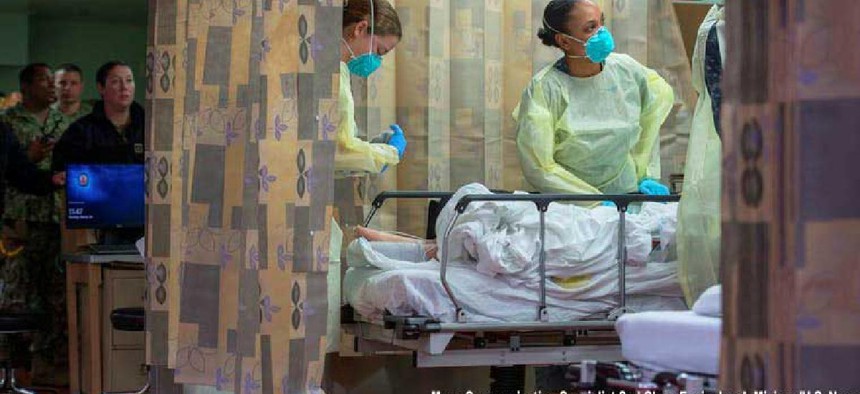Oregon automates hospital capacity data analysis

The Oregon Capacity System allows any health system in the state to visualize occupancy by type and location in real time.
Oregon has launched a statewide command center to monitor hospital capacity and critical medical resources. The Oregon Capacity System (OCS) will roll out to every hospital in the state by summer 2022.
Even before the COVID-19 crisis, Oregon Health & Science University (OHSU) partnered with GE Healthcare to build the OCS to help manage the transfer of patients between hospitals and ICUs in real time. Prior to the launch of OCS, finding the right kind of bed in the right hospital for a particular patient could take several calls by someone working from a spreadsheet. Now, OCS is tracking 7,368 beds and approximately 800 ventilators across 60 hospitals, processing 4.2 million data points each day. To date the system has saved participating hospitals 45,000 hours of labor and is expected to save even more time as further automation reduces the burden of manual reporting.
GE Healthcare created the design concept, based on the technology already in use in OHSU’s Mission Control, a command center originally dedicated to managing inpatient capacity across four hospitals during high-occupancy situations. The system features large screens mounted on the walls, each displaying various “tiles” showing a snapshot for each hospital. Details include current occupancy in various hospital units, patient movements, bed requests, pending discharges and tasks needed, such as imaging, cleaning, pharmacy orders or patient transportation.
Apprise Health Insights and GE Healthcare will help expand the system to track and process more than 5 million data points per day, including acute, pediatric, ICU, specialty, rehab and psych bed availability data as well as information on personal protective equipment, emergency department activities and the availability of life support systems. This data will be automatically pulled directly from each hospitals electronic medical records system in near-real time and fed into the OCS while ensuring patient privacy is appropriately protected, officials said. The information is available through easy-access dashboards on a website that can be accessed from a PC, tablet or smartphone.
The system uses a combination of artificial and human intelligence, Jeff Terry, CEO of Clinical Command Centers, GE Healthcare, told the Portland Business Journal when the center launched. “The AI can spot that this patient may be better served at a community hospital, or we should prioritize discharge activity because we’re holding up a bed, so we don’t have a blockage in surgery today,” he said. “Figuring out what to do about it requires a human to be thoughtful. There’s a lot of nuance.”
The system proved invaluable when the pandemic hit, allowing hospitals to share critical resource information.
“Despite Oregon being one of the states with the lowest ratio of beds per capita, this system has given us such a clear and accurate view of capacity across hospitals that we’ve been able to maximize resources and even bring in patients from out-of-state,” said Helene Anderson, regional director of capacity and throughput at Providence Health and Services. “Having shared visibility has promoted collaboration at the state level to navigate capacity constraints and overcome challenges to patient flow to help patients get the care they need when they need it.”
With a federal grant from the Department of Health and Human Services, Apprise Health Insights will lead the statewide deployment of the system. A governance group made up of hospital and health care system leadership, with both technical and operational expertise, advisors from other stakeholders will provide overall system management and oversight.
“Born out of the need for real-time information in response to the COVID-19 pandemic, this type of centralized platform can aggregate and surface complex data to front-line care providers,” Apprise Health Insights CEO Andy Van Pelt said.
“As the COVID-19 pandemic has demonstrated, health care systems must be nimble and ready to provide appropriate care in resource-constrained circumstances, and doing so requires continuous information and situational awareness,” said HHS National Healthcare Preparedness Programs Branch Deputy Director Jennifer Hannah. “That is why the HHS Office of the Assistant Secretary for Preparedness and Response is supporting the development of tools that provide valuable statewide insight into hospital capacity and critical resource monitoring.”





